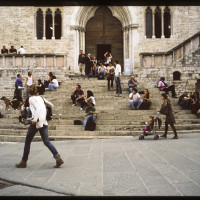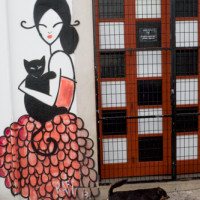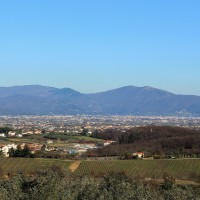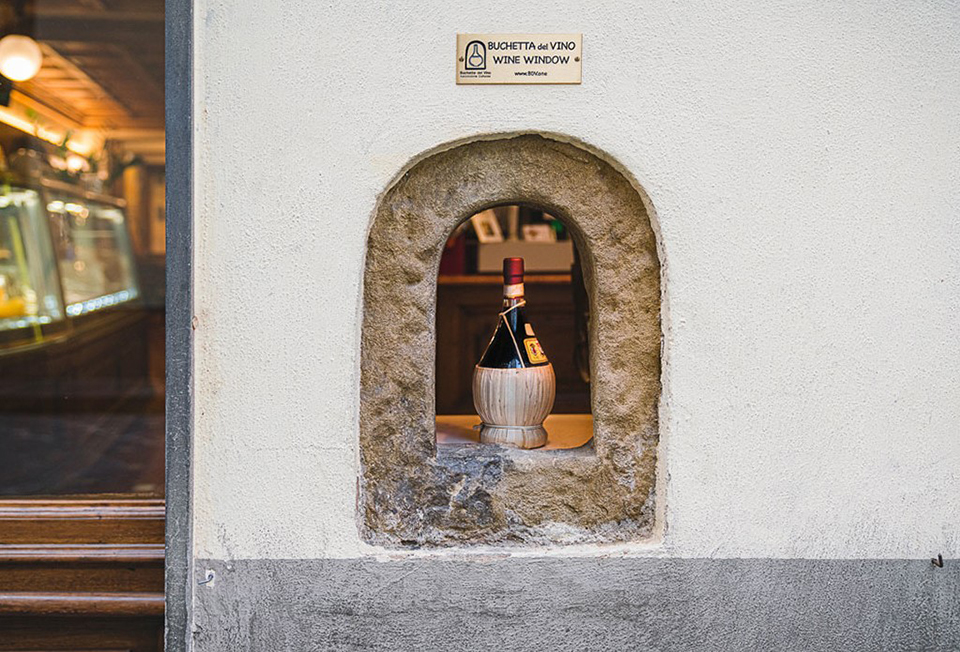
FIRENZE “Wine windows in Florence and Tuscany” is a book published in 2021 by two art historians, Diletta Corsini and Lucrezia Giordano. Here we interview Lucrezia to know how the idea of reviewing the approximately (to date) 300 Tuscan wine windows was born, dedicating them a book but even earlier (in 2015) a cultural association, a website, an Instagram account and a Facebook page, a programme of guided tours, exhibitions and more!

From the plague of the seventeenth century to Covid-19
Lucrezia, first of all: what is a wine window and when does this Tuscan invention date back?
The wine windows are small arched openings placed on the facades of ancient buildings near the entrance door, through which the most important Florentine families sold wine in flasks. We have news of wine windows from the mid-sixteenth century but we cannot exclude that there are more ancient ones. At the moment, archival searches continue and we hope to find the “wine window 0” soon.
Can we also find them outside of Tuscany, maybe something “similar”, or do we have the exclusivity here?
This is mainly a Florentine peculiarity and widespread also in other places in Tuscany, however recently we have found some interesting testimonies in Faenza (RA) and Montalto di Castro (VT).
When and how did wine windows come back in fashion in Florence? It seems that mass media and social media around the world have discovered their existence recently, creating a real trend with the hashtag #winewindow. Thanks to Covid. Can you explain to us what has happened in the last two years?
The wine windows were back in fashion in Florence in May 2020, during the first lockdown. In fact, some little windows have been reopened by the owners of some bars and restaurants who wanted to revive the ancient tradition of selling wine in ways suitable for social distancing and the new type of trade: glasses of wine, aperitifs, ice cream and coffee.
In the same period, our art historian Diletta Corsini found a document of extraordinary importance: the “Report of the Contagion in Florence in the year 1633-1634” by the Florentine academic Francesco Rondinelli. This is the first testimony that tells about the methods of selling wine from the little window in the period of plague. From the plague of the seventeenth century to Covid-19: the news went around the world and the term “wine window” entered by force in the vocabularies of many foreign languages.
#Huntingforbuchette!
Of the 180 little windows registered in Florence, show us three that you consider particularly curious and interesting for their past history or new function, for the location or other…
The wine windows are scattered throughout our regional territory and being in perfect harmony with the surrounding streets and buildings, they are often not noticed. They are very similar to each other but differ in shape and materials used, this is because they had to be faithful to the architecture of the building that housed them. One of the prettiest is located in via del Giglio, at the Vivai Bartolini Salimbeni winery: it has a refined setting consisting of a sort of Renaissance portal, a real rarity. Another very interesting little window is in via Santo Spirito, now owned by the Bistrot Babae, the first place in Florence to have reactivated the wine window in the summer of 2019, serving glasses of wine every day from 7 to 8 pm. I point out a particularly curious one in Piazza Duomo at number 6, carved directly into the wood of the palace door; it seems that opening the door in the entrance door was the first effective solution for selling wine by the minute.
Instead, outside of Florence, in the rest of Tuscany, you have counted at least other 100 ones, right? Where can we most easily meet them if we keep our eyes attentive?
Outside of Florence we currently have more than one hundred references. The province of Florence has 34, that of Siena 20, that of Pistoia 17, Arezzo 12, Pisa 9 and Prato 6. The research continues, our census is currently open and the lists are constantly updated. In Prato, in piazza del Comune n.16, just under the loggia there is a small window with the shape of a flask, at the moment there are no other similar windows in the whole region.
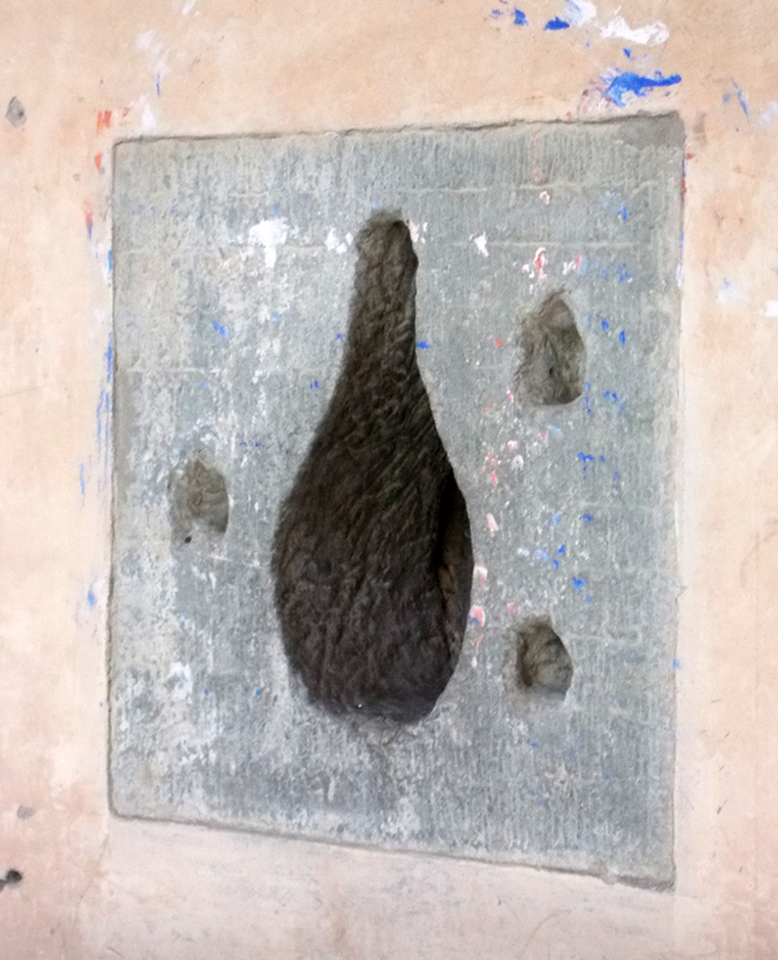
Help us recognise them: what kind of building are they usually on? And where are they located?
They are located on the main facades of noble palaces, on the ground floor, mostly next to the main door or on the side of the building. They are located at arm height to facilitate the introduction of the wine flask inside the small hole and the exchange of coins.
“Wine windows” is the title of the book but also the name of your cultural association founded in Florence in 2015 to make known and safeguard these unique and particular “windows”. In addition to reviewing and telling (with the book, in Italian and English, on social media and through events) the characteristic Tuscan openings, guided tours are organised for those who want to discover an “unusual” Florence. Tell us how a visit takes place, how long does it last and how to participate?
The association was born with the aim of safeguarding and enhancing the wine windows. To this end, we have carried out numerous initiatives including the regional census. We organise treasure hunts for the little ones and guided tours for all ages not only in Florence but also in other cities in Tuscany. The visit aims to show a little known side of the city but no less important, we talk about wine, flasks and retail sales. All this lasts for a couple of hours and usually ends with a good glass of wine taken from one of the newly active windows. To participate is very simple, just register for the event by selecting the date on which you intend to visit. We regularly publish the new appointments on social channels and on the website www.buchettedelvino.org
Taking care of the territory
You have even targeted the little windows in the historic centre of Florence: all or just some of them?
In agreement with the Superintendency we were able to affix an explanatory brass plate to some wine windows. The first was affixed to the buchetta of Palazzo Antinori, a noble Florentine family dedicated to wine production for more than six hundred years. However, the reason why we have not yet equipped all the small windows with their own plate is due to the fact that we also need the consent of the owners of each building and it’s not always easy to get in touch. We realised, however, that the small windows with the plate are not vandalised, so we hope one day to be able to affix them to all of them.
On the website www.buchettedelvino.org and related social media (@buchettedelvino on Instagram and Facebook), we can stay up to date on your activities. Any plans for the near future?
For the future we have many projects, over the years our cultural association has been growing a lot. We have created exhibitions, video tours, conferences, guided tours in Italian and English and much more. Certainly the most important project of this last year was the publication of the book, a work of study and research that lasted years that is giving us great satisfaction. For the future? Many projects that we do not want to anticipate: stay updated on our channels, we are waiting for you!

